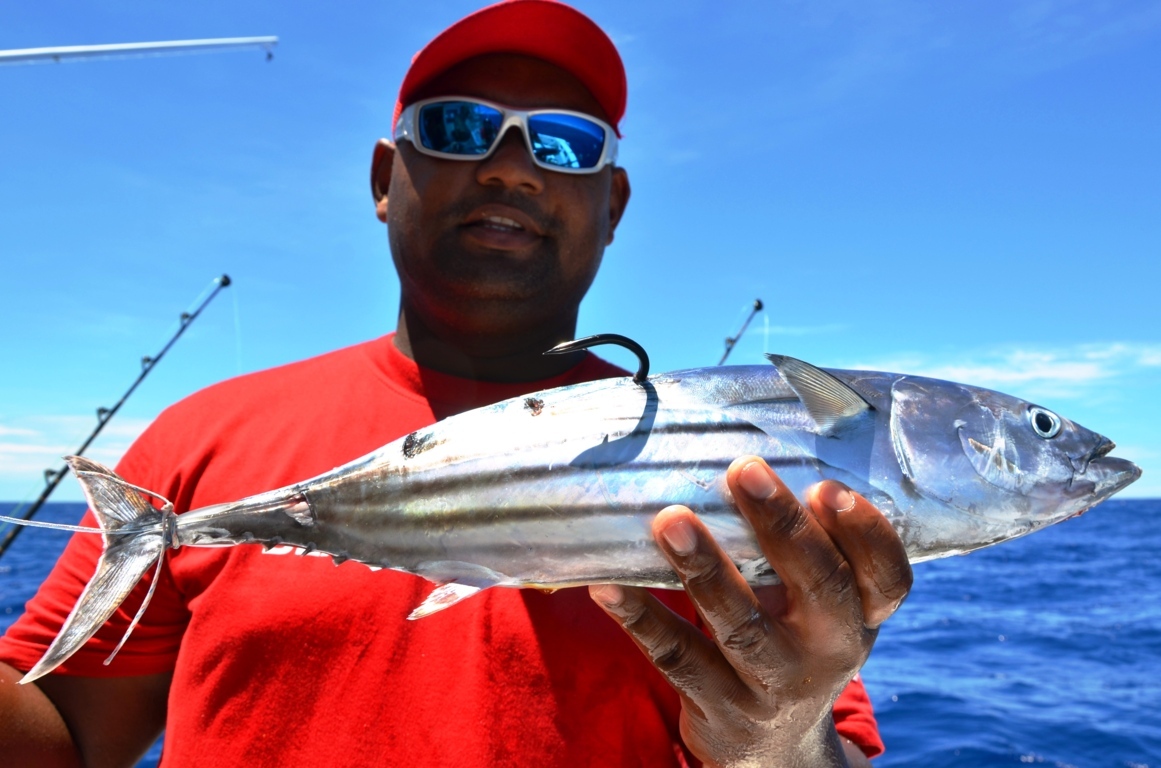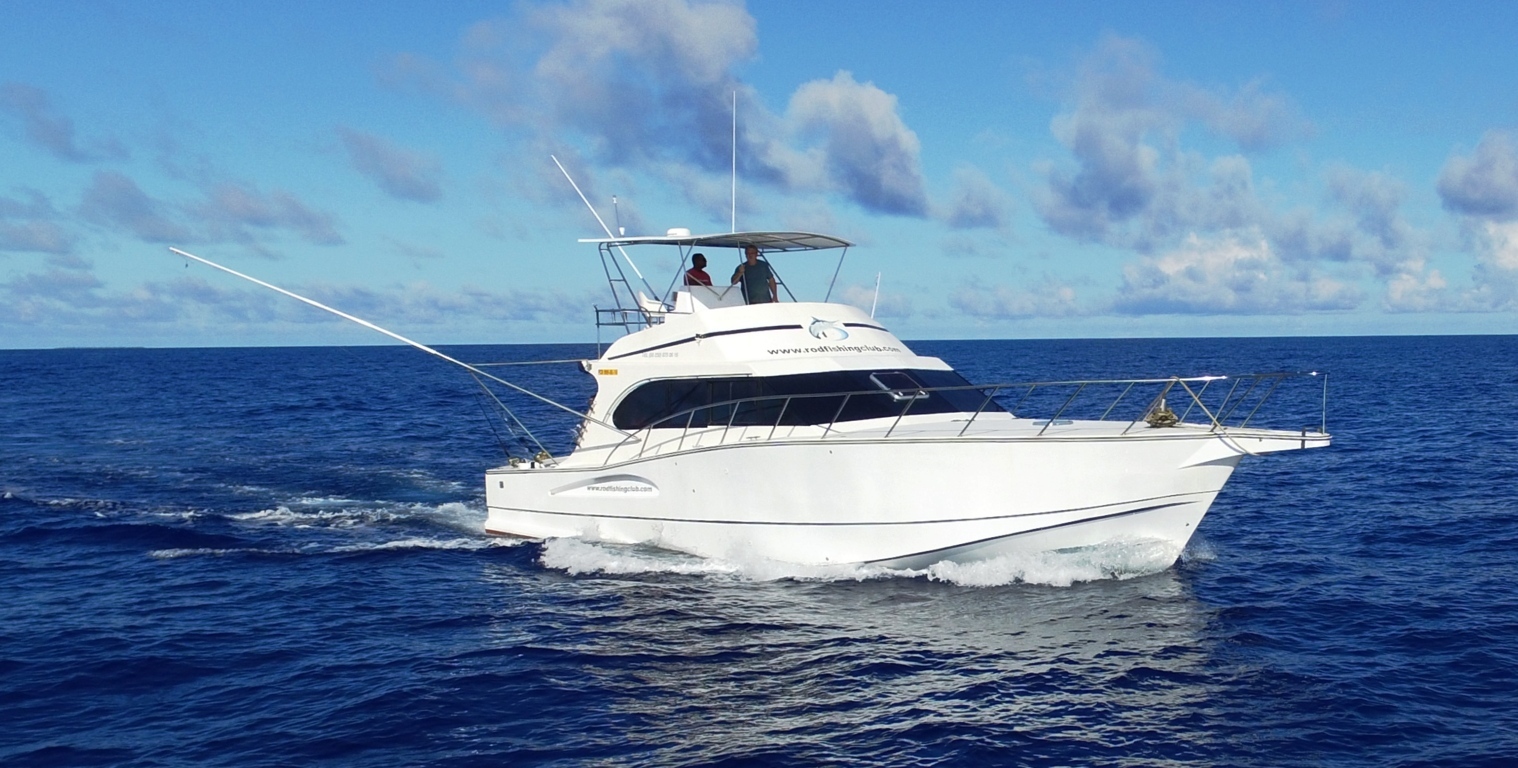
TUNAS
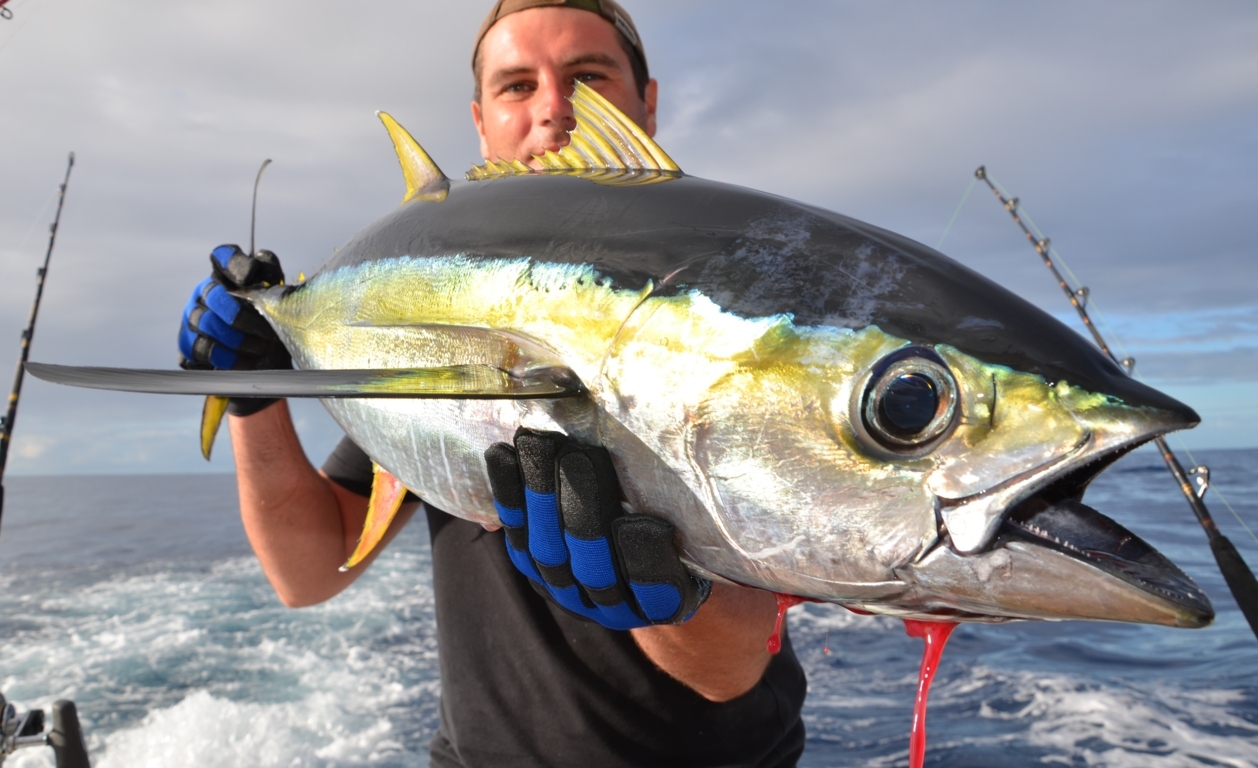
Tunas are hydrodynamic shaped which enables them to reach a top speed about 55mph. They are great migrators. They travel around tropical and subtropical waters in which temperatures vary between 20 and 30°C. Voracious, they can gulp down, up to 30% of their weight, small fish and shellfish.
Tunas present 2 types of migrations:
- During the day, they evolve at surface, above thermocline; at night they lower down.
- Reproduction makes them migrate seasonally and within a group. Before spawning, they can move over thousands of miles.
- Adults also accomplish trophic migrations (to look for food).
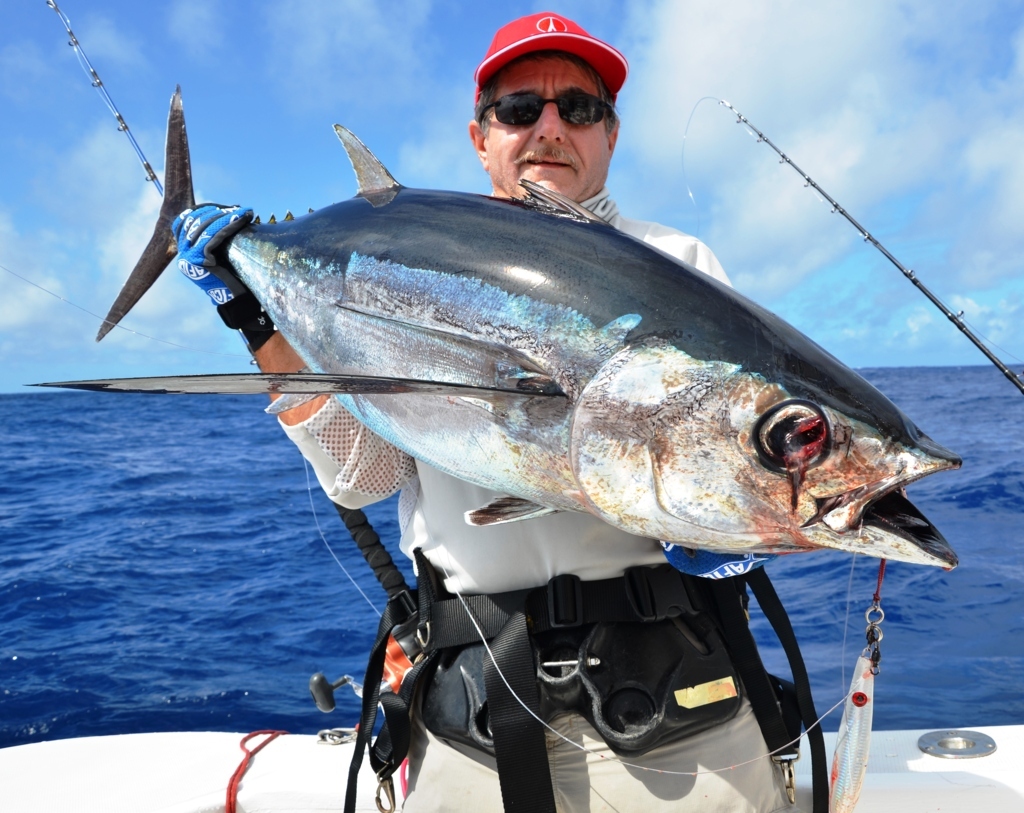
Here are the main species found in our area:
- yellowfin tuna or albacore (Thunnus albacares)
- skipjack tuna or listao (Katsuwonus pelamis)
Since we only caught one sample of long-fin tuna (Thunnus alalunga) and big-eye tuna (Thunnus obesus) we shall not linger over these subjects!
However, you may admire them below.
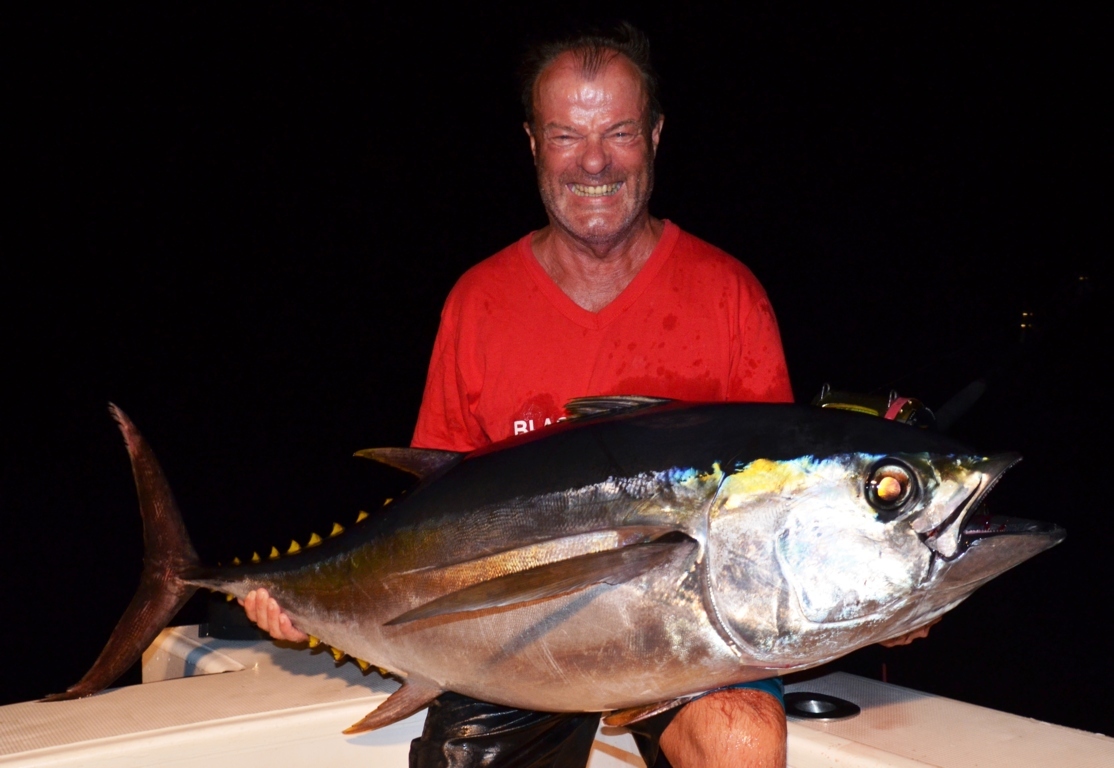
YELLOWFIN TUNA BEHAVIOUR AND REPRODUCTION
It is easy to recognize:
- It is probably the most coloured of all tunas. Its beautiful colours go from black to metallic dark blue on its back, a whitish silver grey on its belly and have a nice golden strip from eyes to tail.
- Big sized species (+120cm) have their second dorsal and anal fins long and slender, as sickles. This is why this big yellow fin tuna is also called “long fin” in Reunion.
- Its fins and tail finlets are yellow.
Its pink flesh for small ones is more “red” among adults. It is thus easy to confuse with bluefin tuna (Thunnus thynnus), much scarcer and much more expensive.
Yellowfin tuna can reach 2m long and may live up to 7 or 9 years old in Indian Ocean.
The yellowfin tuna IGFA world record is of 193,68kg, on 18 September 2012 in Mexico.

YELLOWFIN TUNA BEHAVIOUR AND REPRODUCTION
Yellowfin tuna is a big pelagic fish that evolves in tempered and tropical waters of the three oceans. It moves in homogeneous schools composed of species about same age and length. It generally evolves in or above thermocline, between surface and 250m depth.
Biggest species may gather with others species (porpoises, dolphins or whales). It is always good to troll around these schools…!
It reaches sexual maturity at 2 years old, weighing about 15kg for 100cm long. Therefore it is not surprising to find it one year later being 1.50m long as an adult!
Females may lay several millions eggs a year (of one millimetre diameter within about 40 laying). These eggs hatch within one or two days. After hatching, the development is fast. Juveniles are about 50mm long. They spend their first year close from where they were born. Then, they migrate towards deeper waters.
Yellowfin tuna’s diet mainly depends on local resource. It chases within banks any type of fish: flying, feeding fish, calamari and shellfish.
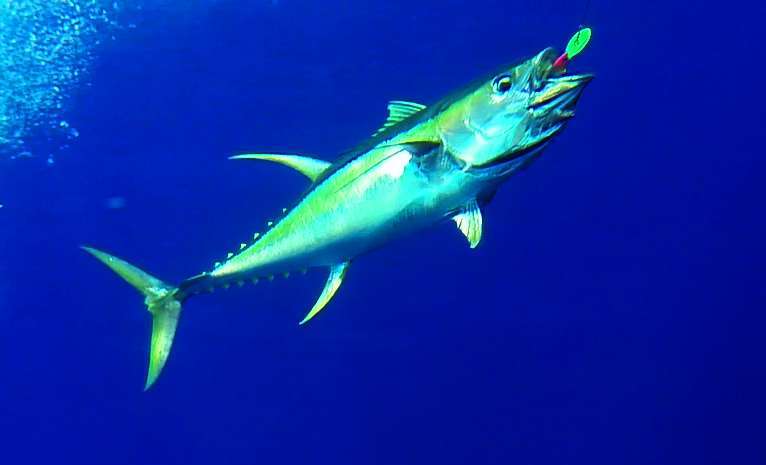
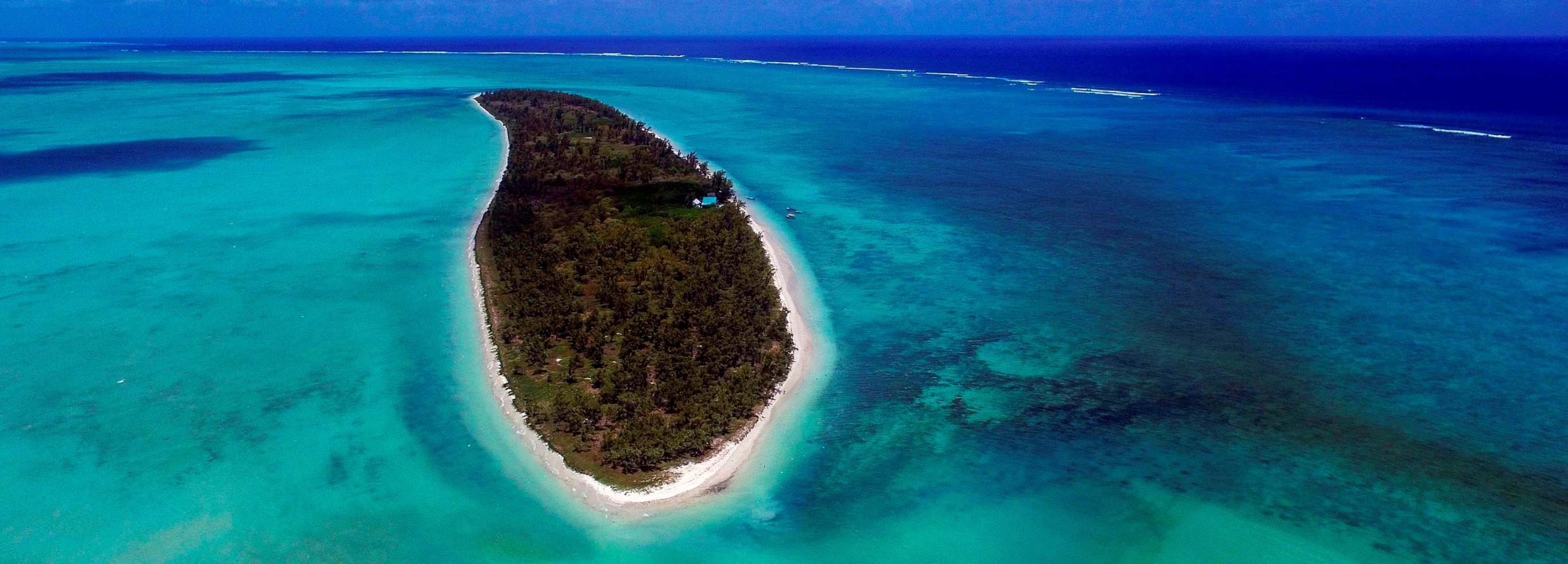
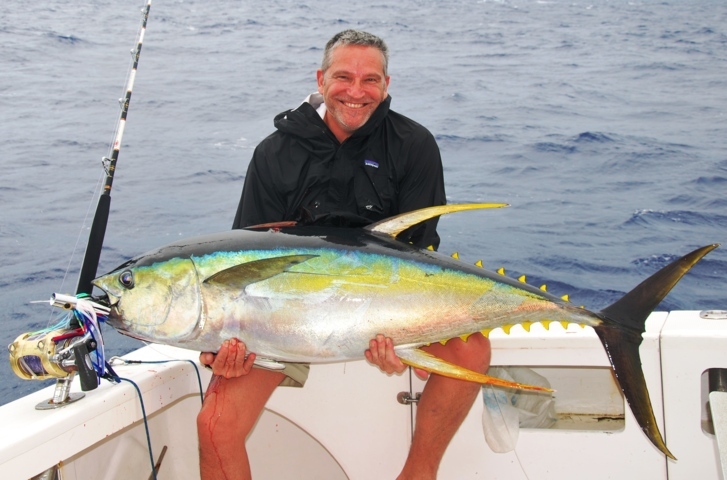
FISHING YELLOWFIN TUNA
It is highly appreciated by anglers. Its defence, impressive in powerfulness and resistance, rates it above all other species of tuna.
Here are a few technics to catch this great fighter
- Trolling
- Fast or semi-fast trolling artificial lures
- Slow trolling with small lures at surface
- Baiting
- Drifting, baiting (with bonito pieces)
- Drifting or slow trolling with small live baits
- Jigging
- Popping or stick-baiting within chases
Its violent strike and first rush is astonishing of powerfulness and quickness. It does not jump. Fight mostly happens vertically, because yellowfin tuna goes down and accelerates towards depths. Then it slowly circles around, towards the surface, giving head pulls, being characteristic of its defence, which does not allow you to roll up much line. Fighting a big yellowfin tuna, each centimetre is worth it.
A yellowfin tunas’ chase is always a great moment. This small part of the sea then becomes sparkling straight away, bubbling and crowded with hips of small pieces of fish being chased and trying to get rid of their predators’ voracity with small jumps. It is according to the move of the bank and to the anglers’ crew (poppers, jiggers or “trollers”) that we adapt the fishing technic.
Small yellowfin tunas are also good baits…
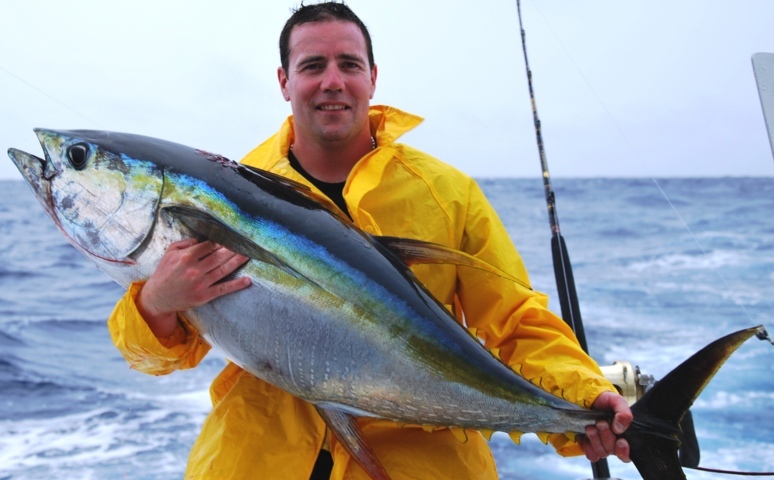
It is highly appreciated by anglers. Its defence, impressive in powerfulness and resistance, rates it above all other species of tuna.
Here are a few technics to catch this great fighter
- Trolling
- Fast or semi-fast trolling artificial lures
- Slow trolling with small lures at surface
- Baiting
- Drifting, baiting (with bonito pieces)
- Drifting or slow trolling with small live baits
- Jigging
- Popping or stick-baiting within chases
Its violent strike and first rush is astonishing of powerfulness and quickness. It does not jump. Fight mostly happens vertically, because yellowfin tuna goes down and accelerates towards depths. Then it slowly circles around, towards the surface, giving head pulls, being characteristic of its defence, which does not allow you to roll up much line. Fighting a big yellowfin tuna, each centimetre is worth it.
A yellowfin tunas’ chase is always a great moment. This small part of the sea then becomes sparkling straight away, bubbling and crowded with hips of small pieces of fish being chased and trying to get rid of their predators’ voracity with small jumps. It is according to the move of the bank and to the anglers’ crew (poppers, jiggers or “trollers”) that we adapt the fishing technic.
Small yellowfin tunas are also good baits…

SKIPJACK TUNA CARACTERISTICS
Its 4 to 6 dark longitudinal strips on sides, its pearly white belly and no spot on its dark purple blue back are enough ways to recognize and differentiate skip-jack tuna from other species.
Skipjack tuna has a smooth body and is scaleless. With its sharpened head, it looks like a shell. Its average length is 65cm, as an adult? It is the smallest specie of tuna.
The skipjack tuna IGFA world record was established in Indian Ocean waters, in Mauritius with a piece of 19kg on 12 November 1985.
In Rodrigues, this very common skipjack tuna is also called «bolt» when it is big.
Our club record is held by Rikard FROEBERG -Sweden- since 08 March 2005 with a skipjack tuna of 15kg.
The biggest are about 1m long.
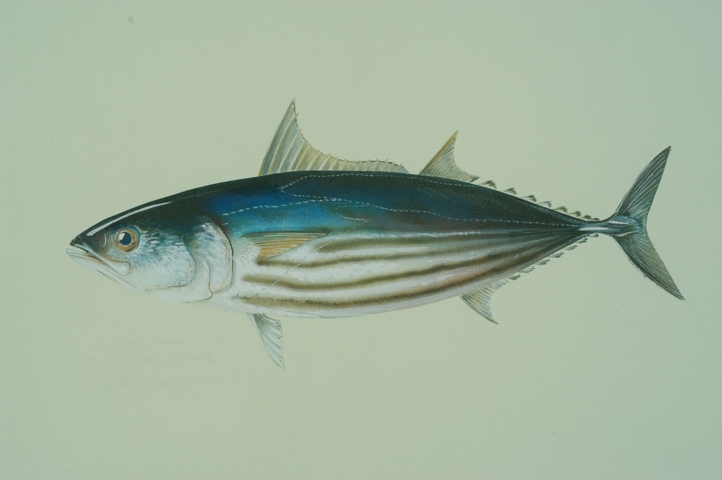

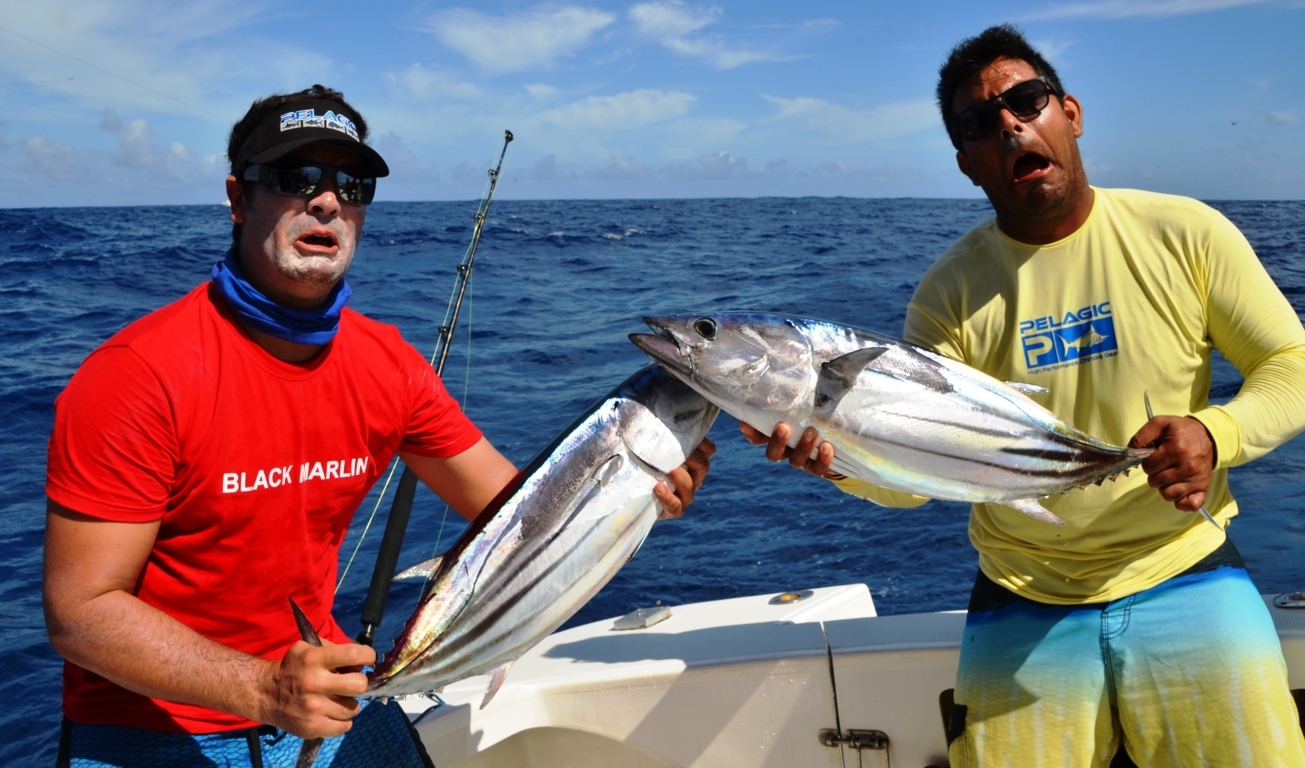
SKIPJACK TUNA BEHAVIOUR AND REPRODUCTION
Skipjack tuna is found in tropical and subtropical waters of the des 3 oceans.
This gregarious specie live within schools of several thousands pieces, mainly same sized. It is found from close to the coast to open sea close to surface where it feeds all day long.
It reaches it sexual maturity at about the age of 1 (2kg for 40 to 45cm). It reproduces all year long.

FISHING SKIPJACK TUNA
Skipjack tuna is the most common fish. Very swift for its length, its powerfulness surprises the beginner. We catch it in 2 ways:
- Trolling (fast or semi-fast with small lures at surface).
- Popping within chases.
The biggest skipjack tunas give the illusion to have a big opponent. It acts like all tunas: powerful rush, deep down at the boat. It may be surprising to fight it on light tackle.
They are excellent live baits. We maintain them alive in tuna-tubes where they should please the great pelagic in due course, as live baits.
Cut into pieces, they are one of the most attractive baits.
